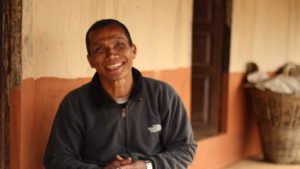 In the rural village of Thingan, Nepal, a small loan can go a long way. For the past seven years, ServLife’s microfinance program has been empowering families to escape extreme poverty by offering small, low interest loans to jump start family businesses. The village, which lies 28 miles south of Kathmandu, is dominated by agriculture. Most of the 365 households make a living through planting crops, raising livestock or running small shops.
In the rural village of Thingan, Nepal, a small loan can go a long way. For the past seven years, ServLife’s microfinance program has been empowering families to escape extreme poverty by offering small, low interest loans to jump start family businesses. The village, which lies 28 miles south of Kathmandu, is dominated by agriculture. Most of the 365 households make a living through planting crops, raising livestock or running small shops.
Of those 365 households, 39 have already received a loan through the program and have begun moving out of poverty. Narayan, the village’s first recipient of a microloan, struggled for years to care for his family of seven. When he received a $900 loan, he purchased two buffaloes and began making butter to sell. The small business took off almost immediately, providing $400 a month, enough income to meet family’s needs and pay off the loan ahead of schedule.
Sita, one of the program’s most recent loan recipients, has seen success after only a month. After purchasing a buffalo, she has already seen a return on investment. “Since the beginning of the loan we have been making about eight dollars per day. We are getting lots of benefit now!” she reflects.
 Ginger farming has also been a successful investment for several villagers. Padam, a local farmer, is about to see his first harvest. “I took the loan just a few months ago,” he notes. “Everything is now going well. Once I harvest, I am going to sell all my ginger to the market shops. When we received the loan, it helped us to work on a larger scale, so it really benefitted our family more.”
Ginger farming has also been a successful investment for several villagers. Padam, a local farmer, is about to see his first harvest. “I took the loan just a few months ago,” he notes. “Everything is now going well. Once I harvest, I am going to sell all my ginger to the market shops. When we received the loan, it helped us to work on a larger scale, so it really benefitted our family more.”
Krishna, another local ginger farmer, has seen the loan meet the needs of his wife and six kids. “It helps our family a lot, especially to buy food for the family,” he said.
The loans have been a small but impactful act of love in Thingan, and no one knows it better than its first recipient. Seven years after his loan, Narayan looks back on how the program has transformed the village. “Before microfinance, people were poor. They didn’t have money but after microfinance, they have money now. They can take care of their families. They can send their children to school.”

